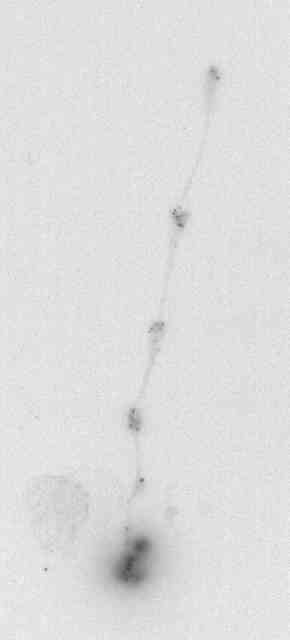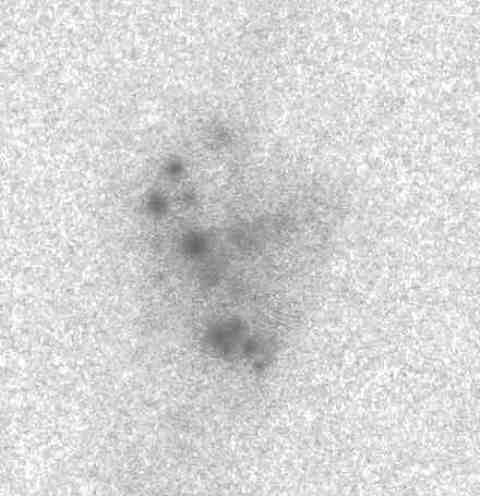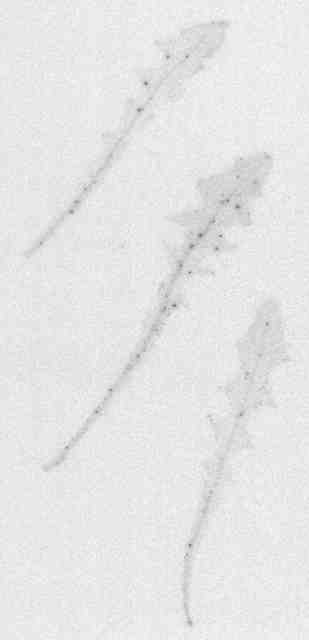May 18, 2011
Autoradiographs of radioactive dandelion and horsetail from Fukushima
By arevamirpal::laprimavera
17 May 2011 From the blog of Professor Bin Mori of Tokyo University Graduate School of Agricultural and Life Sciences: Autoradiograph of Equisetum arvense (Horsetail; young shoots are edible), picked on May 3:
This is an enlargement of one part of the skirt. The distribution is uniform, so the particles are likely spores.
Autoradiograph of dandelion leaves:
Professor Mori says the pictures show that radioactive materials have been absorbed from the roots and distributed throughout the plants. He thinks the dark dots on the dandelion leaves are where the radioactive materials landed on the leaves. Professor doesn’t recommend tempura made out of these spring delicacies.



Thank you so much for these great images. Could you find out from the Professor if the root area at the bottom of the Equisetum is radioactive particles, it does not look like spores, but the area seems over exposed.
The dandelion leaves are definitely contaminated from particles rained out or settled on the leaves from the air currents. This is just like nuclear bomb test fallout on tobacco leaves during 1952-63 in the US, causing a large increase in lung cancer during that period in the US.
You can read and post my 2004 article in the Japan Times predicting a Fukushima like disaster:
"Japan's Deadly Game of Nuclear Roulette" http://search.japantimes.co.jp/cgi-bin/fl20040523x2.html
Leuren Moret, Radiation Expert in Berkeley, California
This is a very interesting article, particularly from the point of view of root absorbtion. Since day one of the disaster we began making provision for growing all our food under cover – I'm in France. Sure enough, Criirad warned us in April of spikes of Iodine 131 and Cesium 137. They also warned against using harvested rainwater in overhead watering but now it looks as if no rainwater should be used.
The article by Leuren Moret is excellent but I'd guess she'd be much happier not to have to say "I told you so". So Russia, U.S.A., U.K. and France are still pushing ahead with nuclear as if Fukushima is just some far away, ephemeral nightmare. These four are run by the old guard – dinosaurs still living in a 1950's dream-world – isn't it time they woke up?